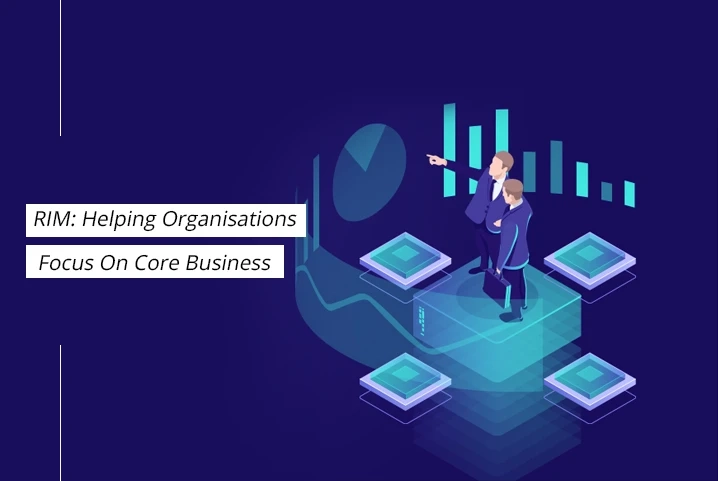Ten years ago, entrusting another organization with the management of IT infrastructure seemed daunting and complex, akin to handing over personal belongings to a stranger. However, today, it has become commonplace for companies to outsource infrastructure management to specialized experts.
Remote Infrastructure Management (RIM) emerged as a concept a decade ago, but its significance skyrocketed in 2020 amidst global lockdowns and remote work mandates. Businesses of all sizes, from small startups to multinational corporations, swiftly transitioned to RIM for remote infrastructure management out of necessity. In this post, we will discuss the key factors to consider when selecting a remote infrastructure management service provider.
Understanding Remote Infrastructure Management
Before diving into the process of choosing the best remote infrastructure management services, it is essential to understand what remote infrastructure management entails. Remote infrastructure management involves the monitoring, managing, and maintaining of IT infrastructure, such as servers, networks, and databases, from a remote location. This allows businesses to outsource their IT infrastructure management to a third-party service provider, ensuring round-the-clock monitoring and support without the need for an in-house IT team.
How Much Infrastructure Management Is Currently ‘Remote’?
As of the most recent data, remote infrastructure management (RIM) has become increasingly prevalent across various industries, with a significant portion of infrastructure management activities being conducted remotely. While exact figures may vary depending on the industry and geographic region, several factors contribute to the widespread adoption of remote infrastructure management:
Technological Advancements: The advancement of technology, particularly in cloud computing, automation, and remote monitoring tools, has made it easier and more cost-effective to manage infrastructure remotely.Globalization: With the globalization of businesses and the increasing prevalence of distributed teams and operations, there is a growing need for infrastructure management solutions that can support remote work and collaboration.Resilience and Business Continuity: Remote infrastructure management can enhance resilience and business continuity by providing redundancy, disaster recovery capabilities, and the ability to quickly restore services in the event of disruptions or disasters.
What Is the Future for Remote Infrastructure Management?
Automation and AI: Automation and artificial intelligence (AI) technologies will play an increasingly important role in RIM. AI-powered analytics and predictive maintenance capabilities can help organizations proactively identify and address issues before they escalate, improving efficiency and reducing downtime.
Edge Computing: The proliferation of edge computing devices and IoT (Internet of Things) endpoints is expanding the scope of infrastructure management. RIM solutions will need to support distributed edge environments, providing real-time monitoring, management, and security for edge devices and applications.
Cloud Adoption: The ongoing migration to cloud-based infrastructure models will drive the demand for cloud-centric RIM solutions. Organizations will require RIM capabilities that can seamlessly manage hybrid and multi-cloud environments, ensuring visibility, governance, and compliance across diverse cloud platforms.
Remote Workforce Support: The shift to remote and hybrid work models necessitates RIM solutions that can support a distributed workforce. Remote management capabilities, secure access controls, and collaboration tools will be essential for enabling remote IT operations and support.
Customization and Integration: Organizations will seek RIM solutions that offer flexibility, customization, and seamless integration with existing systems and workflows. Modular RIM platforms that can be tailored to specific use cases and integrated with other IT management tools will gain traction.
Focus on Business Outcomes: RIM providers will increasingly emphasize the delivery of tangible business outcomes, such as improved productivity, cost savings, and enhanced customer experiences. RIM solutions will need to align closely with business objectives and demonstrate measurable value to stakeholders.
Factors to Consider
When selecting a remote infrastructure management service provider, there are several key factors to consider to ensure that you are choosing the best service for your business needs.
Expertise and ExperienceOne of the most important factors to consider when choosing a remote infrastructure management service provider is their expertise and experience in the field. Look for a service provider with a proven track record of successfully managing and monitoring IT infrastructure for businesses in your industry. An experienced service provider will have the necessary skills and knowledge to effectively troubleshoot and resolve any issues that may arise.
Security MeasuresSecurity is a top priority when it comes to managing remote infrastructure. Ensure that the service provider follows industry best practices and complies with relevant security standards to protect your sensitive data and information. Look for service providers that offer encryption, multi-factor authentication, and regular security audits to safeguard your IT infrastructure from cyber threats.
Scalability and FlexibilityChoose a remote infrastructure management service provider that offers scalability and flexibility to accommodate your business growth and changing needs. Ensure that the service provider can easily scale their services to meet your evolving IT infrastructure requirements without compromising on performance or security.
Service Level Agreements (SLAs)SLAs outline the terms and conditions of the service provided by the remote infrastructure management service provider. Look for service providers that offer comprehensive SLAs with clear metrics for monitoring performance, response times, and resolution of issues. Make sure to review the SLAs carefully to ensure that they align with your business objectives and expectations.
Cost-EffectivenessWhile cost should not be the only factor to consider, it is essential to choose a remote infrastructure management service provider that offers cost-effective solutions without compromising on quality. Compare pricing plans and services offered by different providers to find the best value for your investment.
Conclusion
Choosing the best remote infrastructure management services is a critical decision that can have a significant impact on your business operations. By considering factors such as expertise, security measures, scalability, SLAs, and cost-effectiveness, you can select a reliable service provider that meets your business needs and ensures the smooth functioning of your IT infrastructure. With the right remote infrastructure management services in place, you can focus on growing your business while leaving the technical aspects to the experts.


